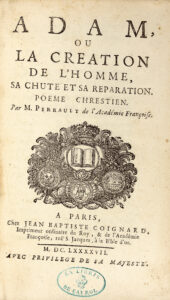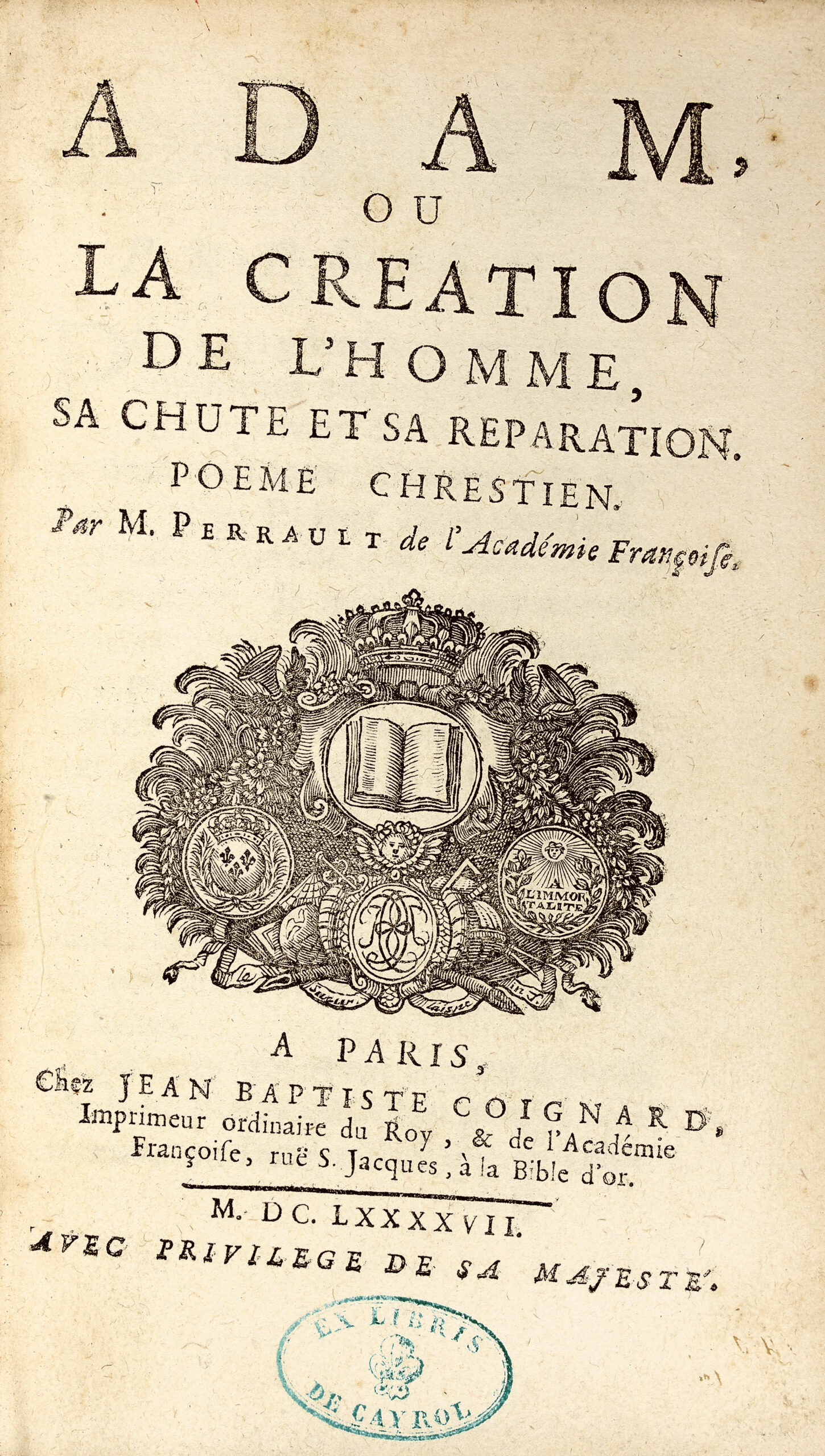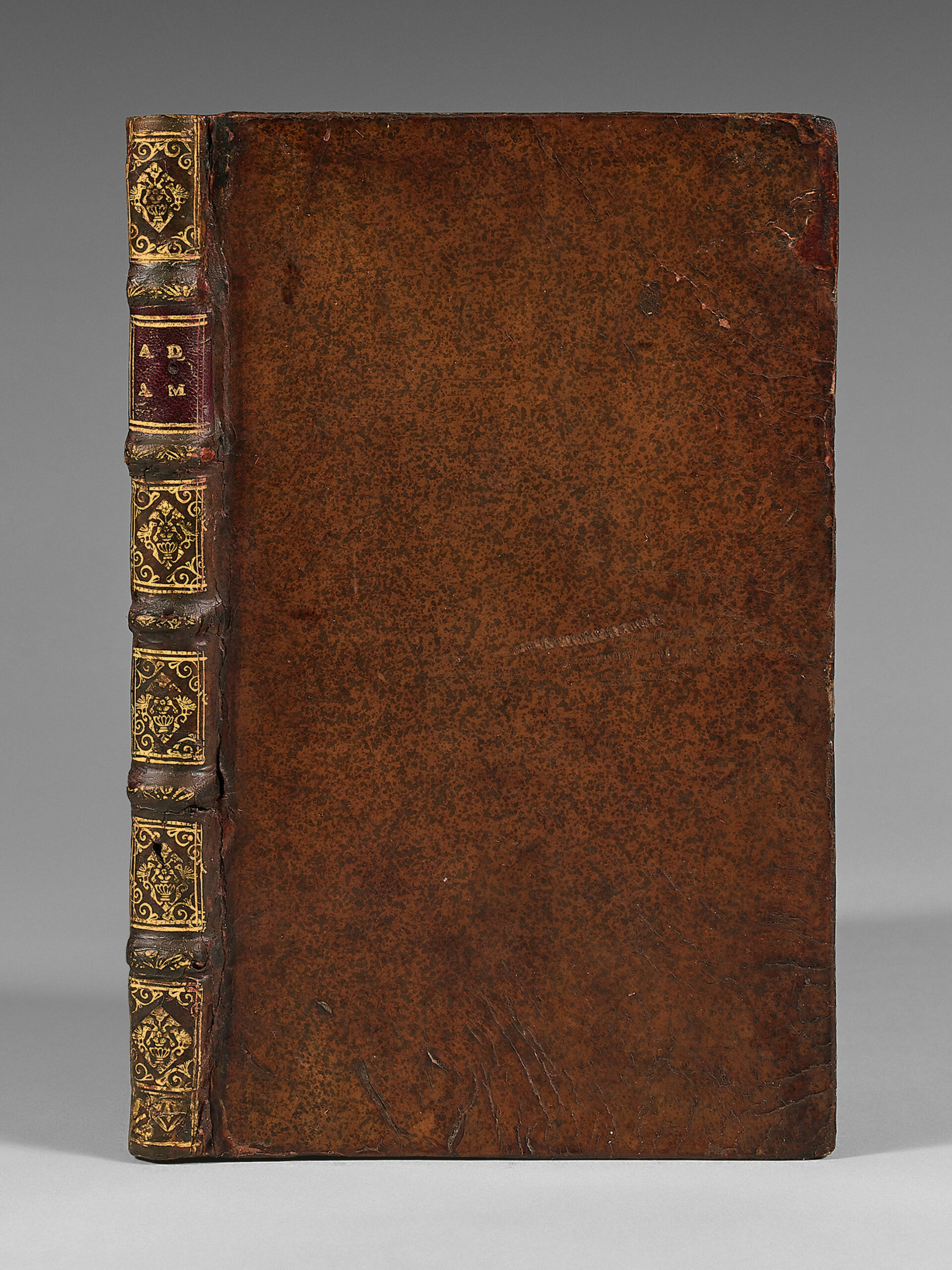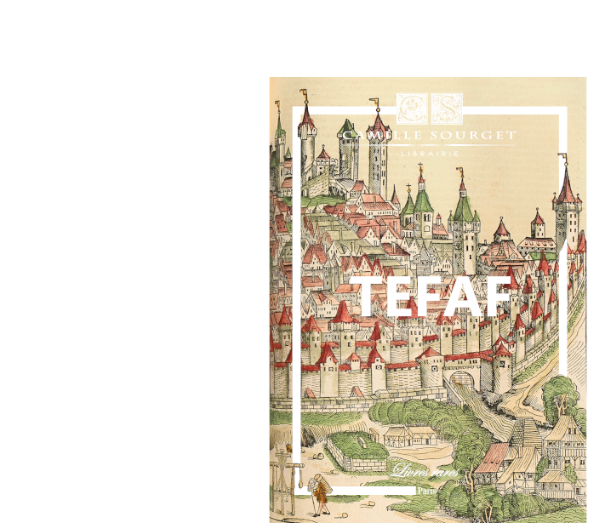Paris, Jean Baptiste Coignard, 1697.
12mo [162 x 97 mm] of (5) ll., 93 pp. and (1) p. of privilege, vignette of Coypel engraved by Simonneau at the beginning of each chant, handwritten notes in the lower margin of pp. 2, 4, 5, 8.
Full brown calf, lavishly decorated ribbed spine, red morocco title piece, mottled edges. Contemporary binding.
The rarest of Charles Perrault’s first editions published in 1697 together with “Histoires ou Contes du temps passé” and their matching piece.
“Very rare first edition of this poem decorated with a header vignette engraved by C. Simonneau after Coypel“. (Debacker, 971).
As the quarrel between the Ancients and the Moderns went by, the four volumes of Parallèles des Anciens et des Modernes were published (from 1688 to 1697), in which Perrault reveals the theoretical sum of his thoughts as well as a double parable of his thought on the world’s order : on the one hand under a spiritual form with Adam ou la Création de l’homme, sa chute et sa réparation… (1697) and on the other hand under a naive style with Contes ou Histoires du temps passé (1697).
Like any good courtier and aware of the king’s interest for the writers of his reign, Perrault exalted the superiority of modern writers over their forerunners. Boileau, Racine and a few other men of letter with a solid culture, annoyed by this incensing of their sovereign and by the favour and multiple benefices, both honorary and lucrative, which Perrault enjoyed, protested with irony or violence. The “quarrel between the Ancients and the Moderns” had started, and it was to last for three long years. This fight, which fascinated the public, was marked by a blossoming of books. Perrault started with four volumes called Parallèle des Anciens et des Moderne, which scandalized Boileau, understandably so, because Quinault was put above Racine and the painter Lebrun above Raphaël.
These tales make Perrault the creator of a literary genre, unknown before him. Written for children, these stories have charmed his contemporaries and soon reached the masterchief status. Is it thanks to the originality of the subjects? Not at all! These stories, in which some scholarly authors thought to recognize the reflection of Oriental tales, similarly to the way they compared fairies to péris, were already known and repeated with thousands of variations by child-minders to their nippers.
“What is Mother Goose, wrote Anatole France, if not the ancestor of us all, and the ancestors of our ancestors, women with a simple heart, with gnarled arms which did their daily duties with a humble greatness and which, dried out by age, having like cicada no flesh nor blood, still stared at the corner of the hearth, under the sooty beam and told all the nippers of the household these long speeches that made them imagine thousands of things?”
These “long speeches”, others before Perrault had vainly tried to write them down. Our great storyteller succeeded at it. He gave them their concise, classic, definitive form, the form of a work of art.
A street scene, a white wall, a piece of coal are, since the Antiquity, elements of every single graffiti, but let Callot or Forain grab the piece of coal and the artwork appears! When La Fontaine wrote these prophetic verses:
Si Peau-d’Ane m’était conté,
J’y prendrais un plaisir extrême.
Le monde est vieux, dit-on : je le crois ;
Cependant,
Il le faut amuser encor comme un enfant !
he added an ironical nuance. He clearly showed that the genre of tales had not entered our literature yet. He would not have dared to write these verses after Perrault, for then an almost sudden blossoming of tales occurred, not due to child-minders any longer, but to the finest ladies of the court and the city. Perrault is the leader which inspired, two centuries later, Meilhac et Halévy (Barbe-bleue), Théodore de Banville (Riquet à la houppe), Armand Silvestre (Grisélidis) and others to write shows in prose and verse.
In 1697 Charles Perrault (1625-1703) delivered his two rarest first editions:“Adam” and “Histoires ou Contes du temps passé”.
In these two works, Perrault offers a double parable of his thought on the world’s order: on the one hand under a spiritual form with “Adam” and on the other hand under a dark style with “Histoire ou Contes du Temps passé”.
Superb wide-margined copy in its pure contemporary binding.



